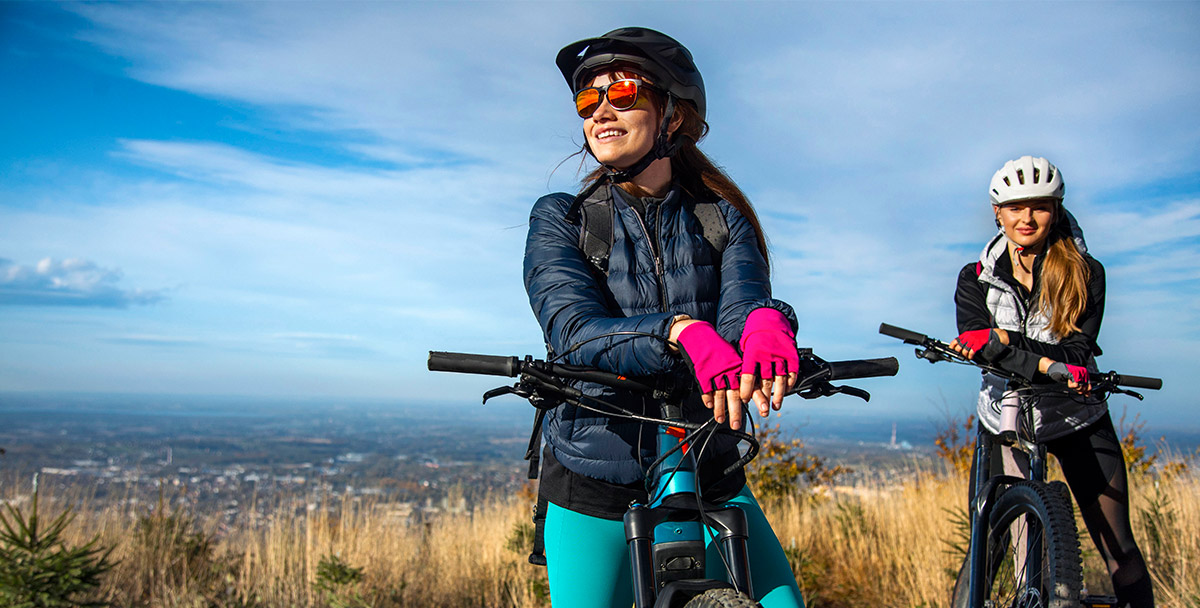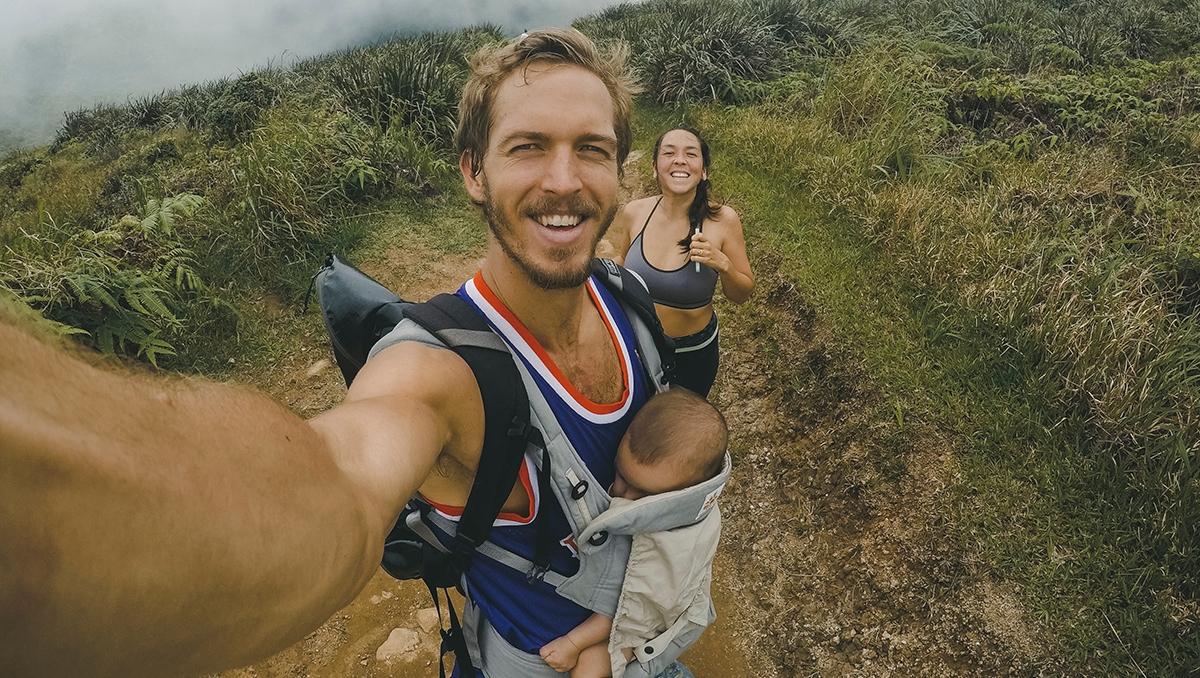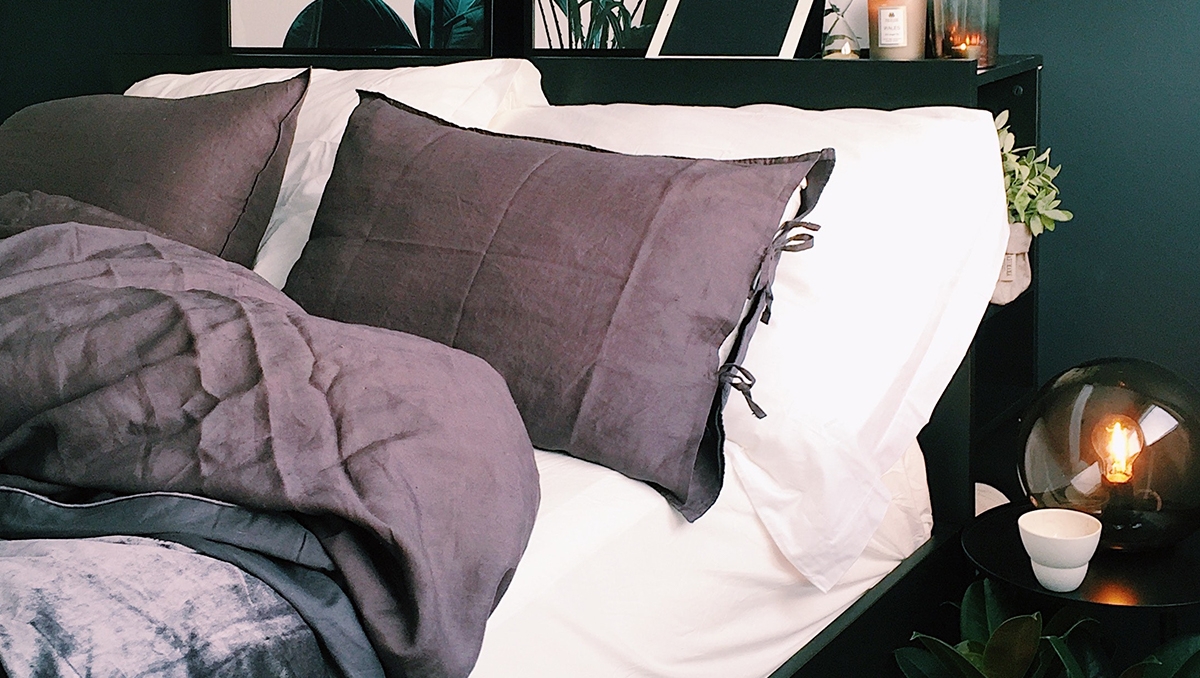Milo Moreno first experienced the joy of surfing in 2016, when he was 5 years old. For his parents, Amy Liebengood and Daniel Moreno, both surfers themselves, watching their son catch a wave was particularly meaningful.
Doctors had told the couple that Milo, who was diagnosed with Down syndrome at birth, might experience sensory issues that would make it difficult to participate in certain sports and activities. His proprioceptive system, for example – the sensors that help our brains connect to our movements – might not deliver the feedback he would need to know where his body is in space, which could impede motor coordination. This would make surfing, a balance-driven sport, especially challenging.
The Morenos began to research how they could introduce Milo to surfing in a way that would be safe, beneficial and fun. That’s how they ended up on a California beach with volunteers from A Walk On Water (AWOW), an organization that holds surfing events across the country for children with special needs. Instructors deliver onshore lessons and safety briefings before paddling out with each participant, offering advice, encouragement and, if needed, a tandem ride. From the sand, family and friends watch and cheer.
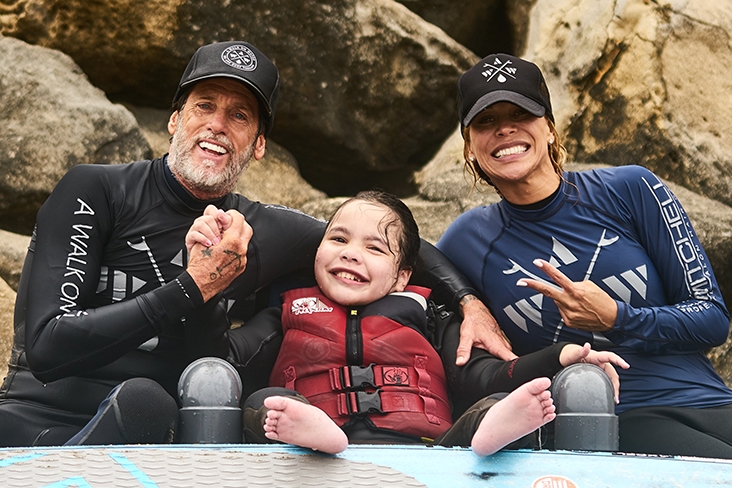
Milo, now 9, still surfs regularly with his dad. Through surfing, Milo has developed strong relationships with peers and mentors, Liebengood says. Surfing has helped her son find his identity. “It isn’t just therapeutic for the athlete – it’s therapeutic for the entire family,” she says. “You get to witness your child participate in a beautiful sport. It’s love in action.”
Just as some runners speak of logging miles as their therapy, many surfers will tell you a day on the waves can wash away their troubles, or at least bring them into focus. But what Milo experienced through AWOW, called surf therapy, is more defined. Devised by occupational therapists, physical therapists and psychologists, surf therapy programs combine surfing with other wellness-based activities. Surfers at AWOW events, for example, can take yoga classes, do art projects and go to concerts on the beach. Other programs may pair surf lessons with talk therapy sessions or group meditation. The idea is to create a dual space: Participants discover their own strength, but they also find strength in community.
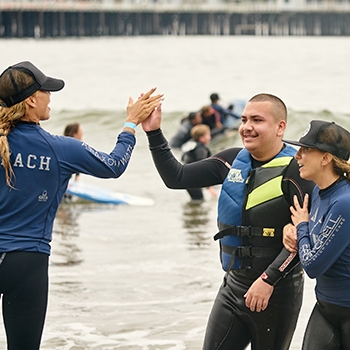
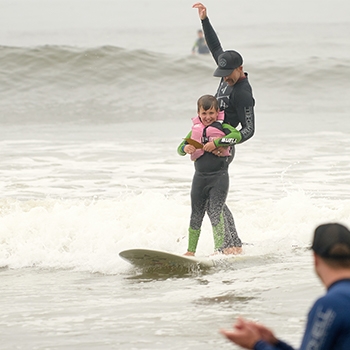
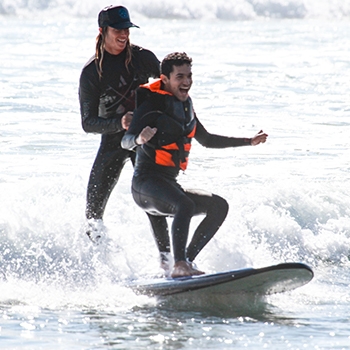
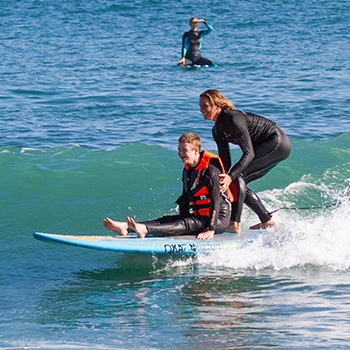

Today, a growing body of research is driving the conversation around the pros of so-called “blue space” and the many different types of people it can help. The Navy is funding a million dollar project to study the effect of surf therapy on veterans with post-traumatic stress disorder.
In a study published last year, kids with mental health challenges who participated in the Wave Project, a surf therapy program in the United Kingdom, reported feeling more confident and calm after the six-week course. Other research is more broad: In 2018, a review of 33 studies about blue space found that most physical activities that involve water – surfing, but also sailing, kayaking, canoeing, swimming and scuba diving – are linked with improved mental health.
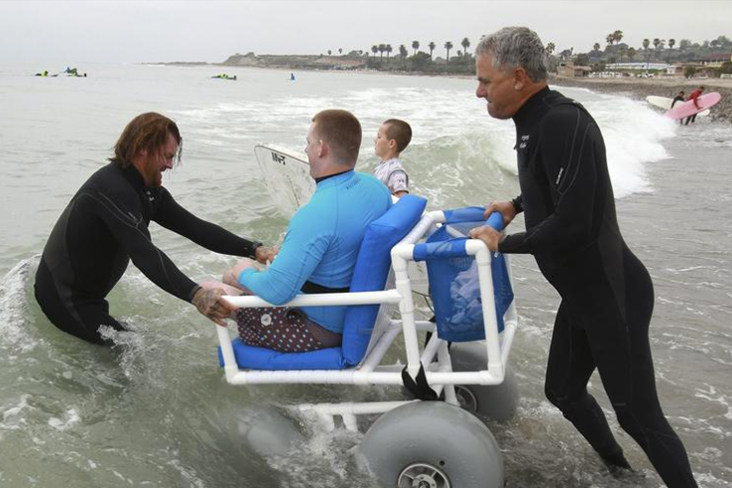
This type of data confirms what surf therapists have seen anecdotally for years. Since 2010, the founders of Operation Surf®, a surf therapy program featured in Netflix documentary Resurface, have watched injured veterans and active-duty military thrive in the group’s free, weeklong surf camps. Waves of Impact, a volunteer-run organization that hosts free surf camps in New Jersey, California and Texas, has been serving injured veterans and children with special needs since 2012. Another group, Surfers Healing, has hosted free surf camps for kids with autism for more than 20 years.
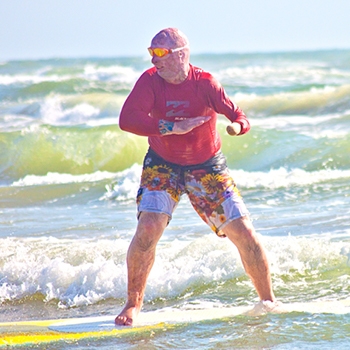
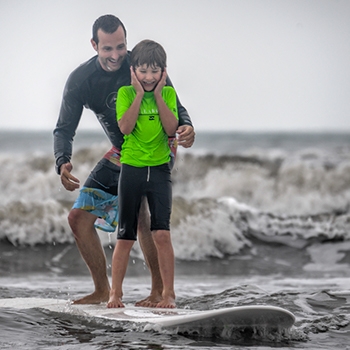
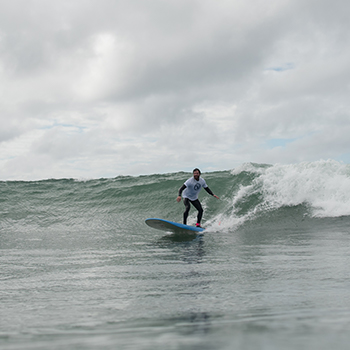
Four years ago, San Diego therapist Natalie Small started the Groundswell Community Project to bring surf therapy to women overcoming trauma. Now, Groundswell runs programs in California, Colorado, Peru, Cuba and Scotland. (The suggested price for U.S. programs is $700 for eight weeks of therapy, but a donation pool helps pay for those who can’t afford the fee.)

“The eight-week program was the best and most difficult thing that I have ever done,” says Leanne Tibiatowski, a California resident who enrolled with Groundswell in summer 2018. “After every session I’d come out feeling more peace and joy, more body acceptance, less anxiety, and a sense of freedom and belonging.”
“What we have seen consistently and can say confidently is that whatever ails you, if you go surfing you will likely feel better,” says Kris Primacio, CEO of the International Surf Therapy Organization, founded in 2017 by eight representatives from surf therapy programs around the world. Primacio can recite a generic list of the benefits of surfing, all of which overlap with the benefits of exercise in general: heightened confidence, lowered blood pressure, better sleep, improved stress management. But why surf therapy is effective, and what has made it successful in so many populations, is still being parsed by researchers.
The 2019 study of the Wave Project didn’t just look at how the kids felt after their six weeks of surf therapy but also at what happened during – what about the program prompted those feelings? Researchers found eight elements of the surf therapy program that led to positive results. Among them: The program presented the challenge of learning and mastering a new skill, absolved kids of any pressure or feelings of failure as they learned, and gave kids a chance to make friends.
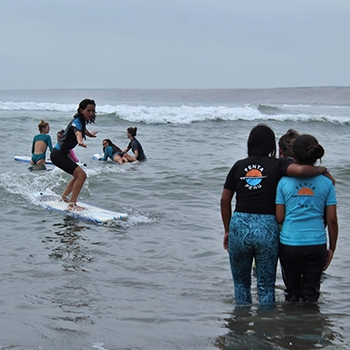
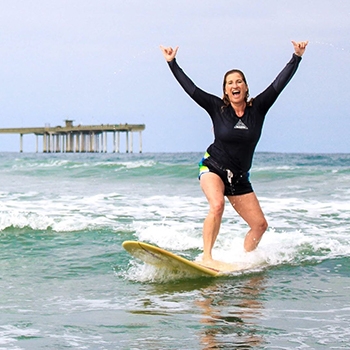
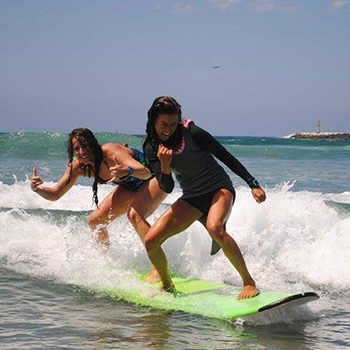
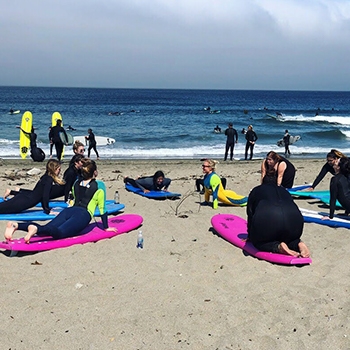
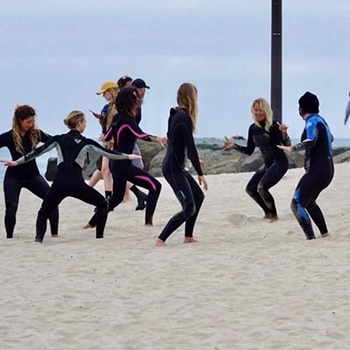
This list might be different in other populations; a combat veteran, for example, may benefit from connecting with others who have similar combat experience. A person overcoming physical trauma may benefit most from the physicality of surfing as a way to reclaim the power of his or her body.
Tibiatowski discovered surf therapy by chance. She grew up near the sea and, despite loving the beach, had reached her 50s without ever paddling out on a surfboard. A few years ago, on a walk near her home in San Diego, she saw a friend sitting on the beach among a circle of women and a stack of foam surfboards – a meeting of the Groundswell Community Project. To Tibiatowski, who had recently discovered she was experiencing acute delayed-onset post-traumatic stress disorder, the run-in felt like fate. Soon after, she enrolled in Groundswell’s eight-week course.
Driving down to the beach that first day, Tibiatowski felt terrified; her body’s overactive fight-or-flight response kicked in and made her nauseous. But once there, a therapist put her at ease. Instructors gave the group lessons on water safety, surf etiquette and how to paddle out. Then, it was off to try to catch their first waves.
“[The program] allowed me to face myself and a part of my body and mind that were giving me messages that no longer served me,” Tibiatowski says. She’s heard people call surf therapy life-changing. But to her, there’s a better way to describe the experience: “It helped me find myself again.”

